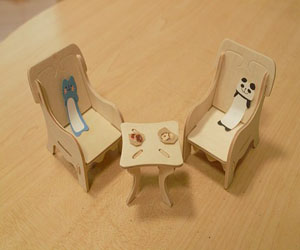


Crafting The Foundations Of A Creative Journey
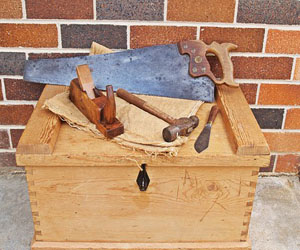
Embarking on a journey into the world of woodworking as a beginner can be both exciting and rewarding. Whether your goal is to create functional pieces of furniture or to express your creativity through artistic woodworking, this article will guide you through the essential aspects of woodworking for beginners.
Starting With The Basics: For newcomers to woodworking, it's crucial to begin with the basics. Before you can create intricate pieces, you must learn about the tools, materials, and techniques involved. Understanding the fundamentals of woodworking is akin to laying a strong foundation for a successful and enjoyable journey.
Safety First: Safety is paramount in woodworking. As a beginner, familiarize yourself with the proper use of safety gear, such as safety glasses, ear protection, and dust masks. You should also learn how to use tools safely, including saws, chisels, and drills, to avoid accidents and injuries.
Tools Of The Trade: Every woodworker, regardless of their skill level, relies on a set of essential tools. As a beginner, you'll want to start with the basics, which may include a saw, chisels, a mallet, a tape measure, a square, and clamps. Over time, you can gradually expand your tool collection as your skills progress.
Selecting Your Wood: Choosing the right type of wood is a critical step in any woodworking project. Beginners often opt for softwoods like pine or cedar because they are easier to work with and more forgiving to mistakes. As you gain experience, you can explore the use of hardwoods like oak, maple, and cherry.
Learning The Art Of Joinery: Joinery is the technique of connecting two pieces of wood to form a strong, lasting bond. As a beginner, start with basic joinery methods such as butt joints, lap joints, and dowels. As you become more skilled, you can delve into more complex joinery, such as mortise and tenon or dovetail joints.
Practicing Patience: Woodworking requires patience. It's essential to approach each project with a willingness to learn from your mistakes and take your time to ensure precision. The journey is as important as the final product, and each project you complete will build your skills and confidence.
Planning And Design: Before you make your first cut, sketch out your project and create a detailed plan. Planning helps you visualize the end result and minimizes errors during the construction process. Additionally, consider investing in or creating project templates to guide your work.
Guidance And Resources: Don't hesitate to seek guidance and resources. There are many woodworking books, online tutorials, and woodworking communities that offer invaluable advice and support for beginners. Learning from experienced woodworkers can help you avoid common pitfalls and accelerate your learning curve.
Start Simple: Begin with simple projects. Create a small bookshelf, a wooden box, or a picture frame. These uncomplicated projects will help you become comfortable with the tools and techniques without feeling overwhelmed.
Woodworking for beginners is an exciting endeavor that offers both practical skills and creative expression. By focusing on safety, learning the fundamentals, and gradually building your expertise, you can embark on a fulfilling journey into the world of woodworking. Remember that every masterpiece begins with a single step, and with each project, you'll inch closer to creating more intricate and beautiful woodworking creations.
Creating Beauty From Discards
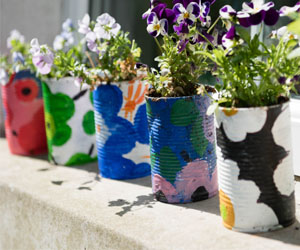 Environmental Benefits
Environmental Benefits
One of the most compelling aspects of repurposed materials is their positive environmental impact. By upcycling, we reduce the need for new resources, which saves energy and conserves raw materials. This practice significantly lessens the burden on landfills and cuts down on pollution generated during the production of new items.
Resourcefulness And Creativity
Repurposing materials encourages resourcefulness and sparks creativity. When working with limited resources, artists often find innovative solutions to turn discarded items into functional and beautiful pieces. This process can lead to fresh ideas and designs that stand out for their uniqueness.
Artistic Expression And Uniqueness
Repurposed materials are celebrated for their artistic expression and uniqueness. Each piece tells a story, preserving the history and character of the original materials. Whether it's a coffee table made from an old door or a lamp fashioned from discarded industrial equipment, these creations are one-of-a-kind.
A Sustainable Lifestyle
Repurposed materials fit perfectly within the framework of a sustainable lifestyle. By incorporating upcycled items into your home or daily life, you contribute to a more eco-friendly world. Not only do you reduce your carbon footprint, but you also promote the principles of recycling, reusing, and repurposing.
Inspiration And Community
Repurposed materials often inspire like-minded individuals who appreciate creativity and sustainability. There are communities and online platforms where enthusiasts share their projects, tips, and ideas.



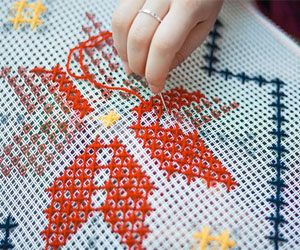


Igniting Creativity And Ambiance In Your Home
 The Essence Of Homemade Candle Art
The Essence Of Homemade Candle Art
Homemade candle art represents the perfect fusion of science and artistry. Crafting a candle from scratch involves understanding the science of wax and wick, but it also encourages artistic expression in choosing colors, shapes, and fragrances. Whether you're a seasoned artisan or a beginner, this craft has something to offer everyone.
Materials And Techniques
Creating homemade candles can be a fulfilling experience. The key materials include wax, fragrance oils, wicks, and coloring agents. The type of wax you choose, like soy, beeswax, or paraffin, affects the candle's texture and burn time. Fragrance oils infuse your candles with enticing scents, from soothing lavender to invigorating citrus. Candle coloring agents provide endless possibilities for personalization.
Homemade candle making involves several techniques, including melting the wax, adding fragrance and color, and pouring the mixture into molds. The cooling and setting process requires patience, as the wax transforms into a solid form, ready to be ignited.
Ambiance And Relaxation
Candles have always been synonymous with creating a warm and inviting atmosphere. The soft, flickering glow of homemade candles can transform any room into a cozy haven.
Exploring The Art Of Sewing Techniques
 Backstitch: This technique reinforces seams by doubling back through the previous stitch. It's essential for creating strong, secure joins in fabric.
Backstitch: This technique reinforces seams by doubling back through the previous stitch. It's essential for creating strong, secure joins in fabric.
Zigzag Stitch: The zigzag stitch is used to finish raw fabric edges to prevent fraying. It's also handy for sewing stretch fabrics and creating decorative edging.
Seam Allowance: Understanding the appropriate seam allowance is crucial for constructing well-fitted garments and avoiding unnecessary bulk in seams.
Advanced Sewing Techniques: Once you've mastered the basics, you can explore advanced sewing techniques that offer more creative and functional possibilities:
Gathering: This technique involves stitching multiple rows of long, loose stitches, which are then pulled to create gathers or ruffles in the fabric. Gathering is often used in creating full skirts, puff sleeves, or decorative elements.
Bias Binding: Bias binding is used to finish raw fabric edges, providing a clean and durable edge with the help of strips cut on the diagonal (the bias) of the fabric. It's ideal for curved hems and necklines.
Darts: Darts are folded, stitched seams that provide shape and contour to garments, particularly for a better fit around curves like the bust, waist, or hips.
Blind Hem: The blind hem stitch is used for invisible hems on garments. It creates a nearly undetectable hemline on the right side of the fabric.
Tips For Small And Large Gardens
 Select containers with proper drainage and consider hanging pots, window boxes, or vertical herb gardens.
Select containers with proper drainage and consider hanging pots, window boxes, or vertical herb gardens.
Group compatible herbs in a single pot or use tiered plant stands to stack multiple containers vertically.
Regularly prune and harvest your herbs to maintain their size and prevent overcrowding.
Indoor Herb Gardens
If you have limited outdoor space, an indoor herb garden can provide fresh herbs year-round. Some tips for indoor gardening include:
Place pots on windowsills or under artificial grow lights to ensure they receive adequate sunlight.
Consider using self-watering pots or hydroponic systems to make indoor herb gardening more convenient.
Be attentive to indoor humidity and ventilation to prevent issues like mildew or pests.
Keep pots near the kitchen for easy access to fresh herbs while cooking.
Large Herb Gardens
Garden Layout
Larger garden spaces offer more opportunities for creativity and plant diversity. Consider these strategies for maximizing your herb garden space:
Design your garden with clearly defined paths and designated planting areas to optimize organization and accessibility.
A Timeless Tapestry Of Tradition And Artistry
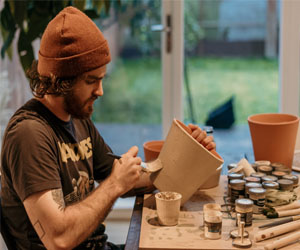 Cultural Significance: Pottery has held a profound cultural significance in the history of human civilization. In many ancient cultures, pottery was not just a craft; it was an art form deeply intertwined with rituals, spirituality, and daily life. From sacred vessels used in religious ceremonies to utilitarian items for food storage and preparation, pottery has played multifaceted roles in cultural practices.
Cultural Significance: Pottery has held a profound cultural significance in the history of human civilization. In many ancient cultures, pottery was not just a craft; it was an art form deeply intertwined with rituals, spirituality, and daily life. From sacred vessels used in religious ceremonies to utilitarian items for food storage and preparation, pottery has played multifaceted roles in cultural practices.
Global Diversity: What makes pottery culture so fascinating is its global diversity. Each culture has developed its own unique styles, techniques, and traditions in pottery. From the intricate porcelain of China and the terracotta of the ancient Greeks to the vibrant Talavera ceramics of Mexico and the earthy, rustic pottery of Native American tribes, the world of pottery is a testament to the ingenuity and creativity of humanity.
Cultural Identity: Pottery often reflects the identity and values of a culture. For example, Native American pottery features distinct geometric designs and motifs that are deeply rooted in their cultural heritage. Japanese ceramics embody the principle of wabi-sabi, celebrating imperfection and the beauty of transience. The intricate patterns of Moorish pottery found in Spain are a testament to their historical Islamic influences.
Traditional Techniques: Pottery culture involves a wide range of traditional techniques that have been passed down through generations.